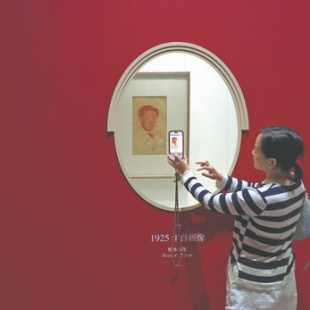Sketching a timeless tribute
Exhibition honors 20th-century artist with nearly 100 of his works on his 130th birth anniversary, Chen Nan reports.

"For many people, he is most famous for his paintings of horses, especially his dynamic and expressive galloping horses," Xu Qingping says. "But in this exhibition, besides horse, we've also selected works that feature other animals, such as fish, cattle and elephant."
Having spent years in Europe, Xu Beihong was able to incorporate elements of classical European art into his traditional Chinese training, creating a style that was distinctly his own.
One of his most celebrated works, Yugong Yishan, is named after a Chinese folktale in which a man attempts to move mountains. Two versions of this painting — one an oil painting in the Western style and the other a traditional Chinese ink work — were created in 1940, when he was invited by Nobel laureate Rabindranath Tagore to exhibit in India.
He depicted nearly naked, muscular men laboring to move mountains, with elephants — rather than the usual cattle — used to transport materials. This choice of animals, alongside the dramatic portrayal of human figures, underscored the artist's deep engagement with both Eastern and Western traditions.
According to Xu Qingping, the idea for Yugong Yishan had been in his father's mind for two decades. However, it was the construction of the Burma Road that inspired him to finally begin work on the project.





































